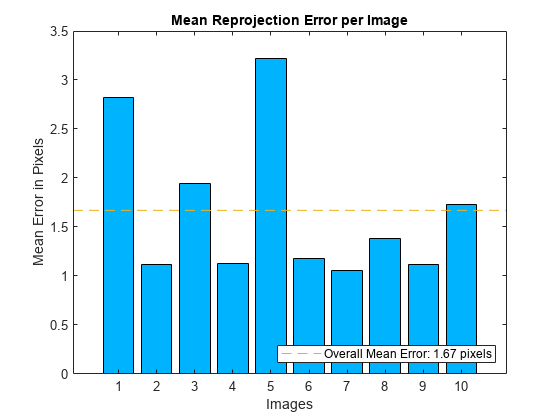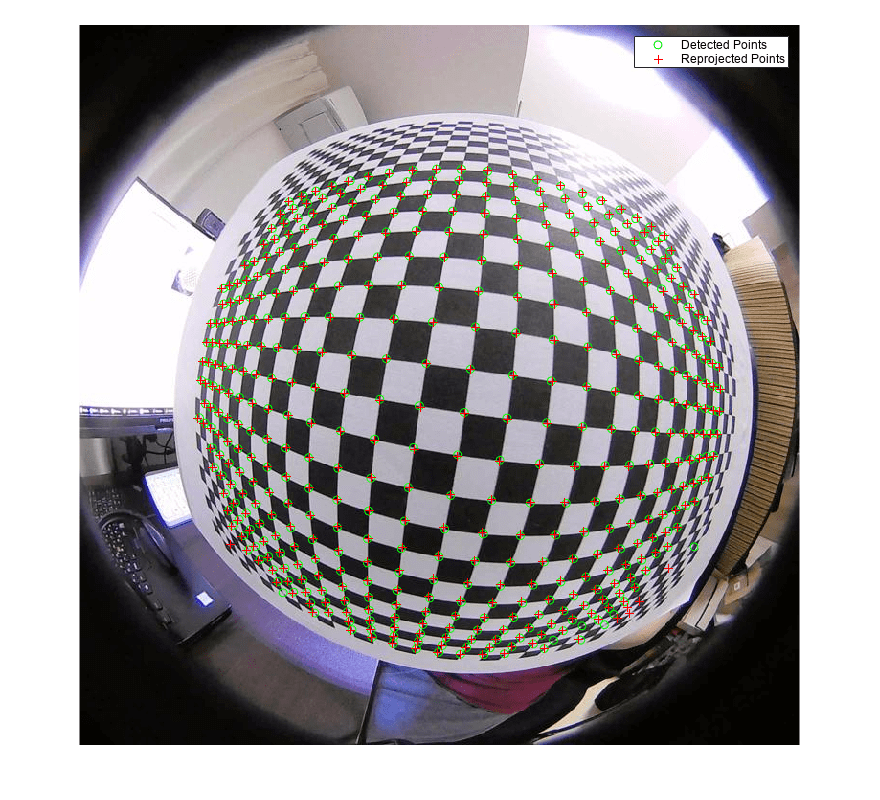estimateFisheyeParameters
Calibrate fisheye camera
Syntax
Description
[
returns a fisheyeParams,imagesUsed,estimationErrors] = estimateFisheyeParameters(imagePoints,worldPoints,imageSize)fisheyeParameters object containing estimates for the intrinsic and
extrinsic parameters of a fisheye camera. The function also returns the images you
used to estimate the fisheye parameters and the standard estimation errors for the
fisheye camera calibration.
[___] = estimateFisheyeParameters(___,
specifies options using one or more name-value arguments in addition to the previous
syntax. For example, Name=Value)WorldUnits="cm" set the world units to
centimeters.
Examples
Input Arguments
Name-Value Arguments
Output Arguments
References
[1] Scaramuzza, D., A. Martinelli, and R. Siegwart. "A Toolbox for Easy Calibrating Omnidirectional Cameras." Proceedings to IEEE International Conference on Intelligent Robots and Systems (IROS 2006). Beijing, China, October 7–15, 2006.
[2] Urban, S., J. Leitloff, and S. Hinz. "Improved Wide-Angle, Fisheye and Omnidirectional Camera Calibration." ISPRS Journal of Photogrammetry and Remove Sensing. Vol. 108, 2015, pp.72–79.
Version History
Introduced in R2017bSee Also
Objects
fisheyeParameters|fisheyeIntrinsics|fisheyeCalibrationErrors|fisheyeIntrinsicsEstimationErrors|extrinsicsEstimationErrors
Functions
undistortFisheyePoints|detectCheckerboardPoints|generateCheckerboardPoints|showExtrinsics|showReprojectionErrors
Topics
- Fisheye Calibration Basics
- Stereo Fisheye Camera Calibration
- Configure Monocular Fisheye Camera (Automated Driving Toolbox)


